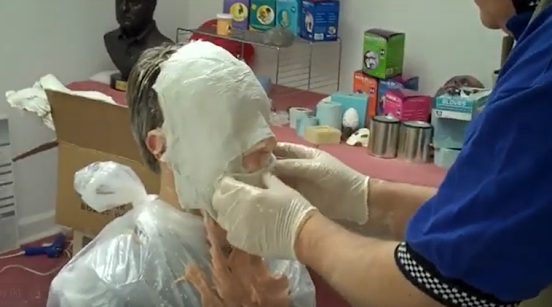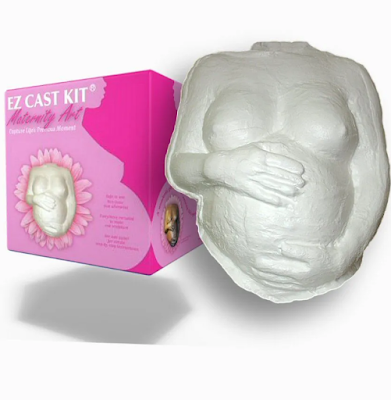When it comes to replicating the finest textures in mold-making or sculpture, Plaster of Paris bandages offer a time-tested solution trusted by professionals and hobbyists alike. Their ability to adapt to surfaces and capture intricate details makes them an essential material in the world of casting. Whether you're working on life-casting, theatrical props, or creating support shells, the technique of layering plaster bandages is key to achieving a high-quality finish. This blog takes a closer look at how layered plaster bandages can be used to capture fine textures, providing practical guidance on how to use them effectively.
Why Texture Matters in Plaster Work
In any casting project, the level of detail captured directly influences the realism and professionalism of the final piece. Skin folds, fabric creases, and surface textures all tell a story- especially in life casting or prop design. Unlike flat molds, dimensional textures demand a responsive material that hardens quickly without sacrificing definition. That’s where Plaster of Paris bandages shine. They form a semi-rigid shell capable of locking in contours within minutes.
The Science Behind Plaster Bandages
Plaster bandages are usually created by coating gauze strips with dry plaster powder. Once dipped in water, the plaster activates and transforms into a smooth, spreadable paste. Once applied over a form, it begins to harden within 5–8 minutes. This quick setting time allows multiple layers to be built up rapidly, preserving even the most delicate textures underneath.
The key to maximizing texture fidelity lies in the layering technique. Applying thin, overlapping strips ensures surface detail is not lost under bulky applications. Professionals often smooth each layer gently with wet fingers or sponges, enhancing conformity and reducing air pockets.
The Layering Technique: A Step-by-Step Approach
Layering Plaster of Paris bandages involves more than just stacking strips. To capture fine detail:
- Surface Preparation: Begin with a clean, lightly oiled surface to prevent sticking. For skin applications, apply a skin-safe release agent.
- First Layer – Texture Capture: This is the most critical layer. Use thin, single-layer bandage strips, trim them to the needed size, and apply carefully for best results. Mold the strips gently to match every crease and indentation.
- Second and Third Layers – Structural Strength: After the first layer sets, apply subsequent layers for reinforcement. These layers should be broader and overlap the before ensure durability.
- Smoothing and Finishing: Before the plaster fully sets, use water-dampened tools to smooth ridges and maintain texture clarity.
This method results in a mold that is both strong and detailed, suitable for various casting materials including alginate, silicone, and resins.
Ideal Applications for Layered Plaster Bandage Techniques
Plaster bandages are versatile and used in a wide range of creative and medical applications:
- Life Casting: Hands, faces, torsos- perfect for capturing human form.
- Orthopedic Molds: Creating supportive structures for broken limbs.
- Theatrical Prop Design: Masks, armor, and body doubles.
- Sculpture Armatures: Internal supports for clay or wax modeling.
- Educational Projects: Anatomy models and architectural textures.
Each use benefits from the plaster’s texture-holding ability, making it a material of choice in fine-detail replication.
Tips to Enhance Texture with Plaster Bandages
- Use warm water to accelerate setting and improve texture grab.
- Apply in low humidity conditions to reduce premature drying.
- Avoid over-saturation which can wash away plaster and reduce detail.
- Cut smaller strips for areas with intricate detailing (e.g., facial features).
- Combine with alginate moldsto serve as a sturdy outer shell that supports and enhances the flexible inner mold.
These simple adjustments help ensure that every line, pore, and curve is captured with precision.
Common Mistakes to Avoid
- Rushing the First Layer: The base layer defines the detail; take your time.
- Using Thick Strips Initially: Start thin, then build up with thicker layers.
- Skipping Surface Prep: Without a release agent, removal can damage detail.
- Overlapping Poorly: Gaps or weak joins can lead to fragile molds.
- Not Allowing Full Drying: Moisture trapped between layers can compromise structure.
Awareness of these missteps improves results and extends the life of your molds.
Conclusion: Elevate Every Detail with ArtMolds
Fine detail is the mark of professional mold-making. With Plaster of Paris bandages from ArtMolds, artists and creators can achieve sharp, detailed finishes without sacrificing durability or speed. From life casting to educational models, mastering the layered bandage technique means unlocking limitless potential in your creative process.
Capture every curve. Sculpt every story. Discover superior plaster solutions at ArtMolds.com.
FAQs
- Can I use plaster bandages for facial molds?
Yes. Plaster bandages are commonly used in face casting. Ensure you apply a skin-safe barrier before starting and use thinner strips around delicate features. - How many layers of plaster bandages should I apply?
Typically, 3–4 layers are sufficient. The first layer captures texture, while subsequent layers build strength and durability. - What’s the drying time for layered plaster bandages?
Plaster bandages set in about 5–8 minutes, but complete drying (curing) may take 24–48 hours depending on humidity and layer thickness. - Is it possible to paint on a plaster bandage mold?
Yes. Once fully cured, you can sand, prime, and paint the surface using acrylic or spray paints. - Are there other materials that can be used instead of Plaster of Paris bandages for mold making?
For creating flexible molds, materials such as silicone or alginate are generally the preferred choice. However, plaster bandages remain ideal for rigid support shells and structure. - How do I store unused plaster bandages?
Store in a cool, dry environment away from moisture. Seal the packaging tightly to prevent premature hardening.

















